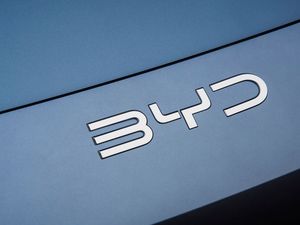Renault’s new Master van has the longest range of any van
Firm’s largest van gets a series of technology upgrades

Renault has revealed the new fourth-generation Master, which gets an extended electric range and significant technology enhancements compared to the outgoing van,
The Master is Renault’s largest van, sitting above the Kangoo and Trafic in its line-up. With the current model first arriving on sale in 2010, it’s a significant update this time around as a result.
Renault has aimed to inject features and styling cues from its car range into the Master, including signature LED headlights with Renault’s recognisable ‘C’ signature. A larger grille also gives the van a more upright stance.

Inside, Renault says the ‘high-grade interior mirrors that of a passenger vehicle’, using a car steering wheel and standard Google-powered 10-inch touchscreen. The firm also describes the van as an ‘office on wheels’, with the middle seat folding down to be a desk, and featuring clips to store a laptop. There’s also 135 litres of interior storage space – 25 per cent more than currently.
One of the biggest changes, however, is under the surface, with the new electric Master. It has a large 87kWh battery and boasts a claimed range of ‘more than 255 miles’, the most of any electric van on sale today. It’s also more than double the claimed 126 miles of range offered with the current Master EV. It will also be equipped with 130kW DC rapid charging capability.
Renault will also offer the Master with a broad choice of diesel engines, ranging in power from 103bhp to 168bhp, which are said to be far cleaner than before. Renault also says that the Master is ‘designed to accommodate a hydrogen engine and fuel cell in the future’.

Up to 20 driver assistance features are also available, while the electric Master will also be available with Vehicle-to-Load technology, which lets users power other electrical devices (such as power tools) using the battery. Renault also says ‘custom-built body parts’, such as fridges and extra heating, can be powered directly by the battery.
At launch, there will be 20 different derivatives of the Master available, including different wheelbases and chassis cabs for conversion, with a payload of up to four tonnes.
Orders for the new Renault Master will open in the second quarter of 2024, with first deliveries expected in September next year.





